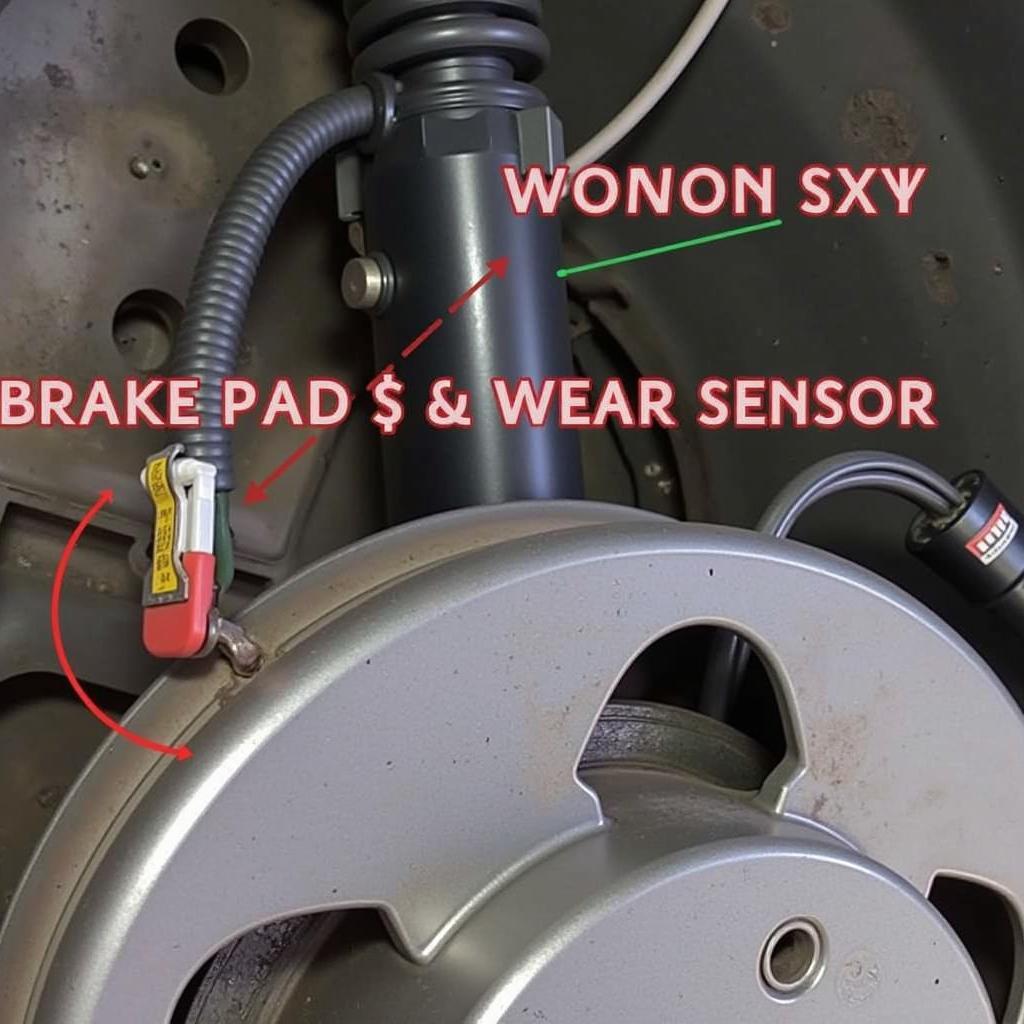Experiencing a brake warning light on your 2006 BMW R1200RT can be unnerving. While it doesn’t always mean a catastrophic failure, it’s a signal your bike needs attention. This comprehensive guide dives deep into the common causes behind this warning light, how to diagnose the issue, and what steps you can take to get back on the road safely.
Understanding Your Bike’s Braking System
The 2006 R1200RT boasts BMW’s renowned linked braking system, designed for enhanced safety and control. Understanding its components is crucial when troubleshooting brake warnings:
- Hydraulic System: The heart of your brakes, using fluid pressure to engage calipers.
- ABS (Anti-lock Braking System): Prevents wheel lock-up during hard braking, ensuring stability.
- Brake Pads and Rotors: Responsible for the actual friction that slows your bike down.
- Brake Fluid Reservoir: Holds the hydraulic fluid, vital for maintaining system pressure.
- Brake Light Switch: Activates your brake lights when you apply either brake lever.
- Sensors: Monitor brake fluid levels, brake pad wear, and ABS functionality.
Common Reasons Your Brake Warning Light is On
1. Low Brake Fluid:
This is the most frequent culprit. As brake pads wear down, the fluid level naturally drops.
2. Worn Brake Pads:
Your R1200RT likely has a wear sensor in the pads. Once they reach a critical thickness, the sensor triggers the warning light.
3. Brake Fluid Leak:
Inspect for any signs of leaks around brake lines, calipers, and the master cylinder.
4. Faulty Brake Light Switch:
A malfunctioning switch can cause the brake lights to stay on or not illuminate, triggering the warning.
5. ABS Issue:
While less common, a problem with the ABS module or sensors can also activate the warning light.
 Checking Brake Fluid Level on BMW R1200RT
Checking Brake Fluid Level on BMW R1200RT
Diagnosing the Problem
“A systematic approach is key when diagnosing brake issues,” advises veteran BMW motorcycle mechanic, Kurt Wagner. “Start with the simplest possibilities before moving to more complex components.”
Here’s a step-by-step approach:
- Check Brake Fluid Level: Locate the reservoir (refer to your owner’s manual) and ensure the fluid level is between the minimum and maximum marks.
- Inspect Brake Pads: Visually check the thickness of your brake pads. If they appear thin or you see a wear indicator groove flush with the pad surface, they need replacement.
- Examine for Leaks: Carefully look for any signs of brake fluid leaks around the components mentioned earlier.
- Test the Brake Light Switch: Engage and disengage your brakes while observing if the brake lights illuminate and turn off correctly.
When to Seek Professional Help
If you’re uncomfortable performing these checks or suspect a more complex issue like an ABS fault, it’s crucial to seek professional help.
“Attempting repairs beyond your expertise can compromise safety and potentially cause further damage,” cautions Wagner.
Preventative Maintenance is Key
Regular maintenance can prevent many brake warning light situations:
- Brake Fluid Flush: Replace your brake fluid every two years or as recommended in your owner’s manual.
- Regular Inspections: Make it a habit to visually inspect your brake pads and lines for wear and tear.
- Timely Repairs: Don’t ignore any signs of brake problems, address them promptly.
 Professional Motorcycle Mechanic Inspecting Brakes
Professional Motorcycle Mechanic Inspecting Brakes
Conclusion
Addressing a brake warning light on your 2006 BMW R1200RT should be a top priority. By understanding its causes and following a systematic diagnostic approach, you can ensure safe and enjoyable rides for miles to come. Remember, regular maintenance and timely professional assistance are your allies in keeping your bike’s braking system in optimal condition.


